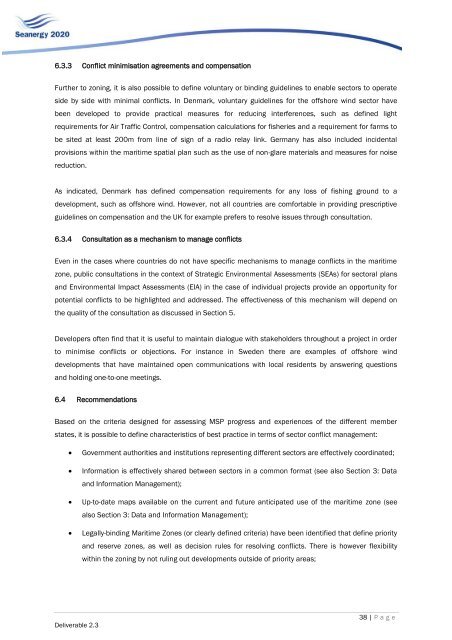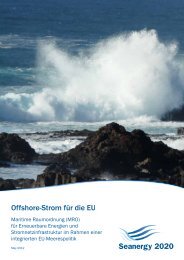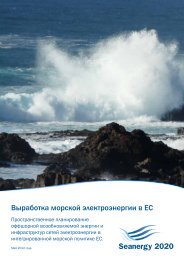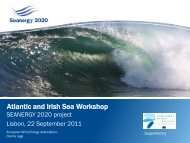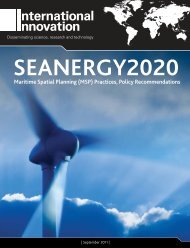Comparative analysis of Maritime Spatial Planning ... - Seanergy 2020
Comparative analysis of Maritime Spatial Planning ... - Seanergy 2020
Comparative analysis of Maritime Spatial Planning ... - Seanergy 2020
Create successful ePaper yourself
Turn your PDF publications into a flip-book with our unique Google optimized e-Paper software.
6.3.3 Conflict minimisation agreements and compensationFurther to zoning, it is also possible to define voluntary or binding guidelines to enable sectors to operateside by side with minimal conflicts. In Denmark, voluntary guidelines for the <strong>of</strong>fshore wind sector havebeen developed to provide practical measures for reducing interferences, such as defined lightrequirements for Air Traffic Control, compensation calculations for fisheries and a requirement for farms tobe sited at least 200m from line <strong>of</strong> sign <strong>of</strong> a radio relay link. Germany has also included incidentalprovisions within the maritime spatial plan such as the use <strong>of</strong> non-glare materials and measures for noisereduction.As indicated, Denmark has defined compensation requirements for any loss <strong>of</strong> fishing ground to adevelopment, such as <strong>of</strong>fshore wind. However, not all countries are comfortable in providing prescriptiveguidelines on compensation and the UK for example prefers to resolve issues through consultation.6.3.4 Consultation as a mechanism to manage conflictsEven in the cases where countries do not have specific mechanisms to manage conflicts in the maritimezone, public consultations in the context <strong>of</strong> Strategic Environmental Assessments (SEAs) for sectoral plansand Environmental Impact Assessments (EIA) in the case <strong>of</strong> individual projects provide an opportunity forpotential conflicts to be highlighted and addressed. The effectiveness <strong>of</strong> this mechanism will depend onthe quality <strong>of</strong> the consultation as discussed in Section 5.Developers <strong>of</strong>ten find that it is useful to maintain dialogue with stakeholders throughout a project in orderto minimise conflicts or objections. For instance in Sweden there are examples <strong>of</strong> <strong>of</strong>fshore winddevelopments that have maintained open communications with local residents by answering questionsand holding one-to-one meetings.6.4 RecommendationsBased on the criteria designed for assessing MSP progress and experiences <strong>of</strong> the different memberstates, it is possible to define characteristics <strong>of</strong> best practice in terms <strong>of</strong> sector conflict management:Government authorities and institutions representing different sectors are effectively coordinated;Information is effectively shared between sectors in a common format (see also Section 3: Dataand Information Management);Up-to-date maps available on the current and future anticipated use <strong>of</strong> the maritime zone (seealso Section 3: Data and Information Management);Legally-binding <strong>Maritime</strong> Zones (or clearly defined criteria) have been identified that define priorityand reserve zones, as well as decision rules for resolving conflicts. There is however flexibilitywithin the zoning by not ruling out developments outside <strong>of</strong> priority areas;Deliverable 2.338 | P a g e


